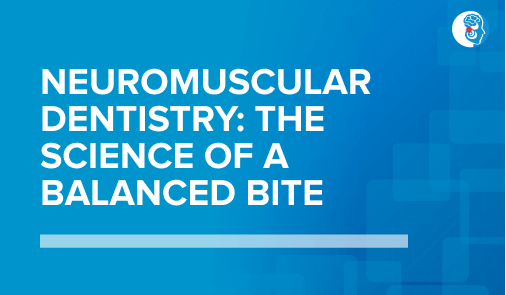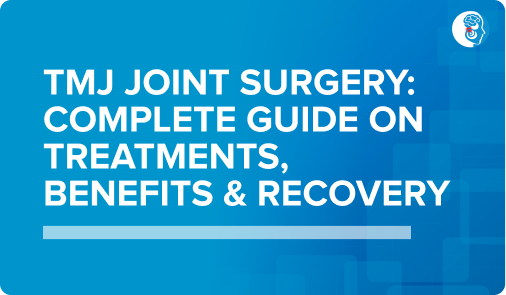
Neuromuscular Dentistry: The Science of a Balanced Bite
Your bite is more than just how your teeth come together. It also has an effect on the muscles and joints of your jaw. When
Published on
When you progress through age, there is a significant change in the face and jawline, due to the fat build-up and skin sagging, making it less defined. These problems can be changed for the better through jawline exercises making the jaw, chin and neckline lead to subtle changes in the face and cheekbones, leading to a more prominent facial structure.
Prominence was given to appearance for a long time and how to look best is what people are concerned about, most of the time. Here is a comprehensive guide to following a few transformative facial exercises, for relieving your locked jaw for good muscle strength and an aesthetic appeal.
Specific jawline exercises help minimize tension around the muscles that are the causes of several TMJ problems like grinding, clenching of teeth and jaw locking. If you include these simple exercises daily in your routine, you can improve your facial skin elasticity and mobility around the jaws.

The TMJ is like any other joint. The first step when any injury to any joint occurs is to immobilize and give the joint some rest. There are several misconceptions out there that suggest jaw exercises to treat your TMJ disorder. It will only create more problems in the joint. On the contrary, if you have TMD, first aim is to do the opposite – move the lower jaw as less as possible…. Like talk less, eat softer food, laugh less, etc. Meet us at The Right Bite Sleep & TMJ Pain Care for a proper splint/orthotic and a healthy treatment regimen to get your TMJ better. And then some Myofunctional therapy (MFT) or Mewing exercises to strengthen the muscles holding the new better physiological jaw position.
Close your mouth, push your neck outward and lift your lower lip, tightening your neck muscles. The stretch should be felt in your chin and jawline. Stretch, hold in the same position for 10 to 15 seconds and release the hold. Repeat this 15 times in 3 sets each with a 10 second break between each set.
Neck curl-ups are also called neck crunches, where you lie down on your back. Touch the roof of palette with your tongue and slightly lift your neck slowly, in an upward and downward motion to activate your neck muscles. Repeat the exercise 15 times for 3 sets, with a few seconds break between the sets.
This exercise uses your muscles to support your jaw, here, you sit comfortably on the chair or floor. Pull your hair back several inches till the neck muscles contract and keep your chest in the front as much as possible. Stay in this position for 2 seconds and gently come forward and keep your chin parallel to the floor below. Repeat this motion with your head moving along with the chin for 3 sets of 15 repetitions each.
This exercise may seem childish, but is an effective one, where you use your vocal cord muscles and your lips being activated for the exercise for locked jaw. For this, open your mouth and make the shape of an ‘O’ and sound it out loud, to tighten your jaw muscles. Similarly, create exaggerated sounds for ‘E’, ‘A’, ‘I’ and ‘U’ which form the vowels of the English language.
This is another type of exercise for locked jaw to help strengthen the surrounding muscles of the face, especially to sculpt your jawline, giving you a perfect and chiseled jaw. Here sit straight, and swallow intentionally and repeatedly, keeping your mouth open in a synchronized count. Same way, close your mouth and make chewing motion, by concentrating on your breathing. While doing these movements, hum slowly. Finish this exercise by taking a gulp of air and holding your breath for 10 seconds before releasing slowly. Repeat the exercise 10 to 15 times.

As much as doing these exercises is important, taking them slowly and emphasizing your counts and breathing technique is as important. If you hurry in this exercise routine, you not only risk muscle strains and tearing of muscles but also have the chances of locking your jaws or damaging them even more.
It is advised to consult with a TMJ specialist or your dentist to get formal advice on how to practice these exercises to keep your TMJ problems in check. Usually, these experts recommend you follow these exercises for 20 to 30 minutes a day for visible results. However, if your TMJ and facial pain persists, visit your doctor immediately and seek their advice on the further steps of treatment.
Along with these exercises, you can follow a healthy lifestyle to keep your jaw and TMJ issues at bay. Following are a few tips to help you with this-

Toning your jawline for a good physical appearance is one thing but giving you a healthy jawline is way more important if you want to take care of your appearance. By following these 5 basic jawline exercises, you can train your facial muscles to support your neck and jawline, giving you more healthier and chiseled features. Following a routine and regularly visiting your TMJ specialist, you can stay on track with your jaw health, as it is the roadway to overall health.
Contact us
Our other blogs

Neuromuscular Dentistry: The Science of a Balanced Bite
Your bite is more than just how your teeth come together. It also has an effect on the muscles and joints of your jaw. When

TMJ Joint Surgery: Complete Guide on Treatments, Benefits & Recovery
TMJ disorders can severely affect daily activities such as chewing, speaking, sleeping, and even maintaining proper posture. When jaw movement becomes restricted or pain becomes

Time Period for Braces and the Fastest Treatment Options
If you are planning to get braces to straighten your teeth, it’s very obvious to have hundreds of doubts in your mind like “How long
WhatsApp us